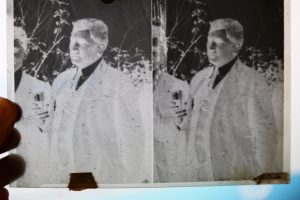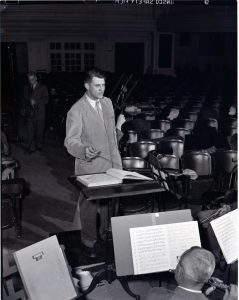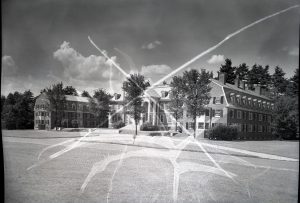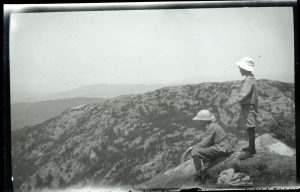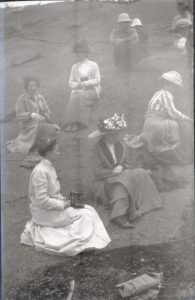Nitrate film, or nitrocellulose, is a highly combustible material that was used in commercial film production in the first half of the twentieth century. Several theater fires, resulting in the deaths of hundreds of people, have been attributed to it. Quentin Tarantino used it as a plot device in his 2009 alternate-history WWII movie Inglourious Basterds (spoiler alert): a Jewish cinema proprietor gets her revenge on an assemblage of Nazi leaders (including Hitler) by igniting a collection of nitrate film. Given that it is prone to spontaneous combustion as it deteriorates, nitrate film is not a material that most libraries and archives want sitting around in their collections, despite its utility in disposing of Nazis.
Recently, the Digital Library Program embarked on a project to digitize a collection of negatives held at Rauner Library that we suspected might contain nitrate film (as well as acetate safety film, which replaced nitrate film around 1950). Given the potentially hazardous nature of the materials, our process has several steps. The negatives are stored in our Preservation freezer; keeping nitrates at low temperatures has been shown to inhibit combustion. We digitize the negatives according to a process similar to our other workflows: the items are defrosted, accession numbers are assigned, images are captured
with the scanner, metadata from the negatives’ envelopes are associated with the image files, and the materials are returned to the freezer, to be discarded eventually.
The objective of the project is to preserve the content of the original materials. We’re finding images similar to those in our photo files: campus buildings, sporting events, fraternity and student organization formals, New Hampshire landscapes, and portraits of faculty and administrators. Nitrate film was prized for its depth of detail and the luminosity of the silver emulsion.



